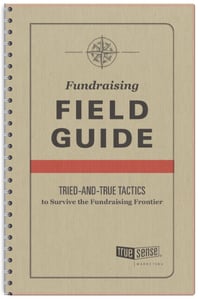
The 3 Types of Fundraising Stories to Use

Our brains are hardwired to readily accept stories. Think of the nursery rhymes you were told as a child. Stories help us learn chronology and hone linear thinking. We discern right from wrong. Stories have also long been known to help form and shape a common set of values.
Storytelling does something else: It triggers the emotional centers of our brain.
This is important, because reason doesn’t drive donor giving. Emotion does. This is true of supporters at every level of the donor pyramid — from those who give $1 – $99, to major donors who give thousands. And it’s true no matter the fundraising channel — direct mail, email, broadcast, or social media.
Stories matter because they make us feel something. And when we feel something, we’re better able to retain that information.
Types of Stories to Use in Your Fundraising Appeals
Admittedly, storytelling that’s authentic and moving isn’t easy to do. But it’s worth it, because donors will respond. Here are three kinds of stories to consider using in your fundraising that actually work:
- Success Stories. No donor ever sends donations to pay for your overhead costs. Donors send gifts because they believe you’ll use them to do something good. But the belief in doing good can only be sustained for so long. Donors need proof. They need to read, see, and hear how their gifts are being used, and what kind of difference they’ve made. Success stories are the best way to do that. You’ll find success stories in reporting back vehicles like newsletters, but they work anywhere.
- Donors as the Story. Telling the story of why a donor gives can help motivate other donors to give, too. There’s a mirroring effect that can happen. When donors read about others who give, they feel empathy and reflect on their own giving. When you do storytelling right, you leave behind the organization as hero and tell donors it’s all about them. As a result, donors deepen their own belief that they can make the world better than it is today. This is hugely satisfying for any donor whose main goal is to make an impact. And isn’t that the motivation most donors have?
- First-person Stories. Sometimes, the most powerful words come directly from someone helped, not from an organizational voice. These storytelling testimonials can be undeniable proof to a donor of why her giving matters. It’s an endorsement that’s completely unbiased, and therefore rings true.
PRO TIP: How Long Are Powerful Stories?
One of the most common questions organizations ask about storytelling concerns length. The answer? It depends. Some of the most powerful fundraising appeals are completely story-driven, with a story woven throughout the entire campaign. But stories can be just as powerful when they’re short and punchy — a paragraph or two within an email or appeal. Stories also drive email, videos, radio, and other non-print channels. In those cases, length varies. The important thing to remember is that content matters more than length. Consideration should be given to how authentic and moving the story and details are, and the channel in which they are told, more so than length.
 This is an excerpt from our newly published Fundraising Field Guide.
This is an excerpt from our newly published Fundraising Field Guide.
Fundraisers have long sought to find and cultivate those with heroic human hearts who want to turn their compassion into action. Along the way, fundraisers have also learned lessons, honed skills, and crafted techniques that — in the end — are framed by basic human behaviors and motivations.
Get your copy of the complete compendium of tried-and-true tactics for conquering the fundraising frontier, written by TrueSense Marketing’s fundraising experts.
